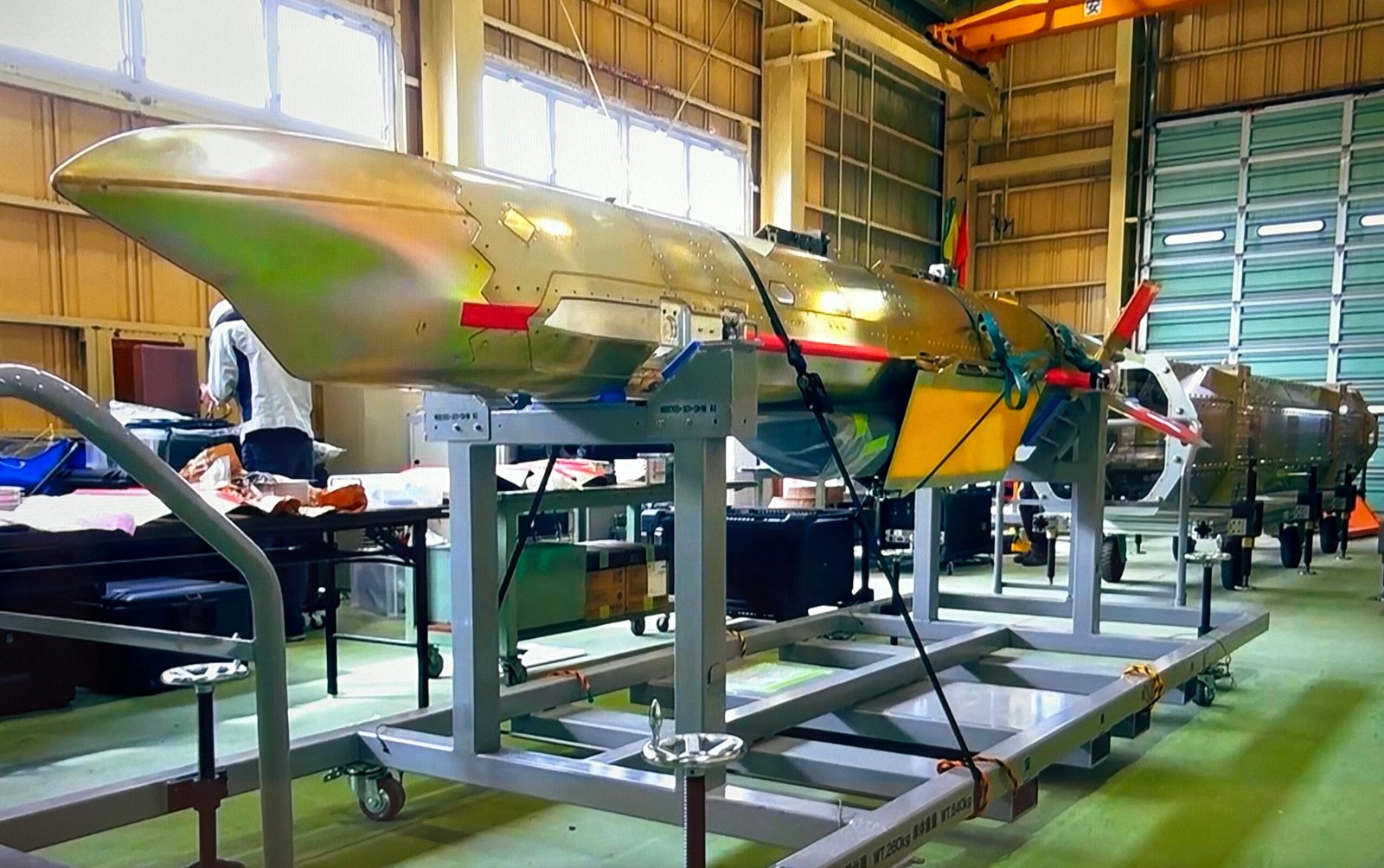
Japan Unveils Modular long-range Missile Prototype
Japan’s Acquisition, Technology & Logistics Agency (ATLA) has revealed details of a new long-range anti-ship missile program designed to strengthen the country’s island defense capabilities.
The project, showcased through official development posters, highlights a modular missile system integrating advanced propulsion, guidance, and data-link technology.
According to ATLA, the research and development effort focuses on creating a next-generation missile platform capable of engaging naval targets at extended ranges while maintaining high survivability against enemy countermeasures. The program’s stated goal is to support Japan’s ability to defend its remote islands and surrounding waters in an increasingly contested environment.
The first prototype, under development in fiscal year 2025, features a compact design powered by the XKJ301-1 turbojet engine. This variant will serve as a test platform for propulsion, guidance, and seeker integration. The airframe incorporates low-observable shaping and internal modular bays to host mission-specific payloads and control systems. ATLA documents describe the prototype as a key step toward validating a new airframe concept built around an “open architecture” to allow rapid integration of future technologies.
The image shows a diagram from Japan’s ATLA illustrating a modular missile design concept. On the left, several interchangeable modules are labeled, including a dual seeker, infrared seeker, jammer/decoy unit, EO/IR sensor, and high-power warhead. The center depicts a common multi-purpose airframe, and the right side shows how different combinations of modules create functional missiles such as anti-ship, decoy, reconnaissance, and strike variants.
A follow-on phase scheduled for 2027 will expand the test series to include two airframes—designated A and B—intended to evaluate advanced sensor configurations, including electro-optical and infrared seekers, as well as a high-speed data-link system. These prototypes will also test improved flight control surfaces and composite airframe structures optimized for low radar visibility.
Japanese defense engineers say the program builds directly on earlier research into standoff and anti-ship systems, such as the Type 12 missile modernization effort. While ATLA has not publicly disclosed the new missile’s range, the design’s larger fuselage and efficient turbojet suggest a substantially greater reach than current surface-launched systems.
The project reflects Tokyo’s continuing shift toward indigenous long-range precision weapons. In recent years, Japan has invested heavily in technologies that enable preemptive and remote island defense, including hypersonic glide vehicles and extended-range cruise missiles. The new anti-ship missile is expected to form part of a broader integrated strike network alongside air- and ground-launched platforms.


